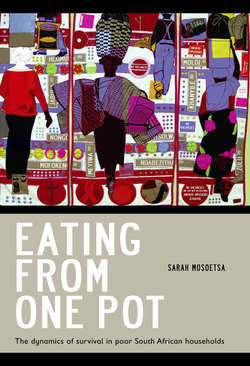Читать книгу Eating from One Pot - Sarah Mosoetsa - Страница 4
На сайте Литреса книга снята с продажи.
FOREWORD
ОглавлениеAs I write these words we have just witnessed popular revolts against dictatorships in Tunisia and Egypt, showing how poverty not only breeds passivity but also collective fortitude and resolution. To be sure, these were not “spontaneous” affairs but emerged from years of underground and informal preparation -- preparation which included the working class at its center. Similarly, the anti-apartheid struggles involved a long, you might say century-long, preparation, spear-headed by South Africa’s black working class, together with such political organizations as the ANC and SACP. While the new South Africa has undoubtedly made many gains, the visions of the Freedom Charter seem to have receded into the past. Indeed, reading Eating from One Pot it is clear that for many postapartheid South Africa has made very little difference in terms of material and social well-being.
Sarah Mosoetsa investigates the fall out of plant closures in the garment and footwear industries of KwaZulu-Natal, South Africa, devastating the sort of communities that had been a center of the anti-apartheid struggles. Hers was no casual entry, but involved laborious in-depth field work over a period of several years, 2002-2004, immersed in the lives of the people she interviewed. She entered the hidden abode of household production to discover a very different world from the one painted by the merchants of social capital and livelihood strategies. Rather than the romance of poor people struggling together to survive, she found a fractious and often violent world. The household was an ever expanding site – expanding in volume and density – of intense conflicts between generations and between genders. Men, accustomed to wage labour, became ever more dependent on women’s resourcefulness, on small informal earnings, subsistence production as well as unpaid domestic labour. As they become increasingly superfluous – surplus labour irrelevant to or even dependent upon the domestic economy – so they become more assertive of their patriarchal claims, more violent, more abusive. If the household contributed to social capital it was as likely to be negative as positive social capital.
Often a staple if minimal source of income, child support grants are channeled through mothers. They not only by-pass fathers but they also circumvent the actual care-givers, who are often the grandmothers. Young mothers run off with the grants leaving grandmothers holding the bag, having to somehow eke out an existence for all. Indeed, it is the elderly women who are the heroines of Mosoetsa’s stories, battling to keep the family alive, even helping neighbors do the same. But, precisely because they are the cement that holds the household together, they are also the target of the greatest abuse, the focus of the most unreal expectations, and attract the animus of accumulating desperation. The household is more likely to be the arena of warring or withdrawn individuals than a haven in a heartless world.
Mosoetsa takes us beyond the household into the community. Once again she tears away the veil behind the stereotype – the stereotype of a unified civil society organizing the defense of community against market and state. To be sure she discovers resilient networks of reciprocity, embryonic burial societies, support from multiple churches and inspiring volunteerism around HIV and AIDs and other health issues, but all this is but a holding pattern as residents have to foot increasing bills for electricity and water delivery. The community is hobbling backwards toward a precipice. Before they get to the edge, they turn and appeal to the state with such committed organizations as the Treatment Action Campaign and the Concerned Citizens Forum, but the state replies with the force of arms, turning apartheid laws against the social movements. There is bewilderment on both sides as the community can’t believe they have elected such a callous state, and the state can’t believe the ingratitude of its citizens. The ANC is caught facing both ways, for and against the people. The trade unions are nowhere to be seen. Once so active in the townships, now the unions retreat to the ever shrinking workplaces of formal labour.
Behind the confusion lies a class recomposition, the emergence of what some have called class apartheid. The new multi-racial bourgeoisie is safely barricaded behind its gated communities. Standing behind the bourgeoisie stands a New South African state that has brought about the polarization of wealth and poverty, and has overseen escalating costs of basic public services – electricity, water, telecommunications – while opening the economy to cheap consumer goods, and thereby devastating the footwear and clothing industries among others. What’s left is a spluttering informal sector based on flexible exploitation, peopled by desperate ex-wage labourers, usually women working outside any protection from the law. Into this combustible mixture the expansion of grants drops like manna from the sky but in the absence of jobs their distribution is the subject of bitter quarrels and they are easily consumed without leading to genuine amelioration. That’s Sarah Mosoetsa’s message.
It’s a familiar story, one to be found in Egypt where foreign aid was dispensed as concessions that redounded to the benefit of US geopolitical interests. Until, that is, the Egyptian people had had enough. But then they had a clear target – a 30 year dictator – just as in South Africa there had been racial apartheid. Today the target is not so clear since the market presents itself as a natural force, while the state claims bankruptcy. Protest bursts forth, but without a clear goal, a vision, or an organization, and without meaningful reform, it can get very unsavory.
Michael Burawoy
March 2011
